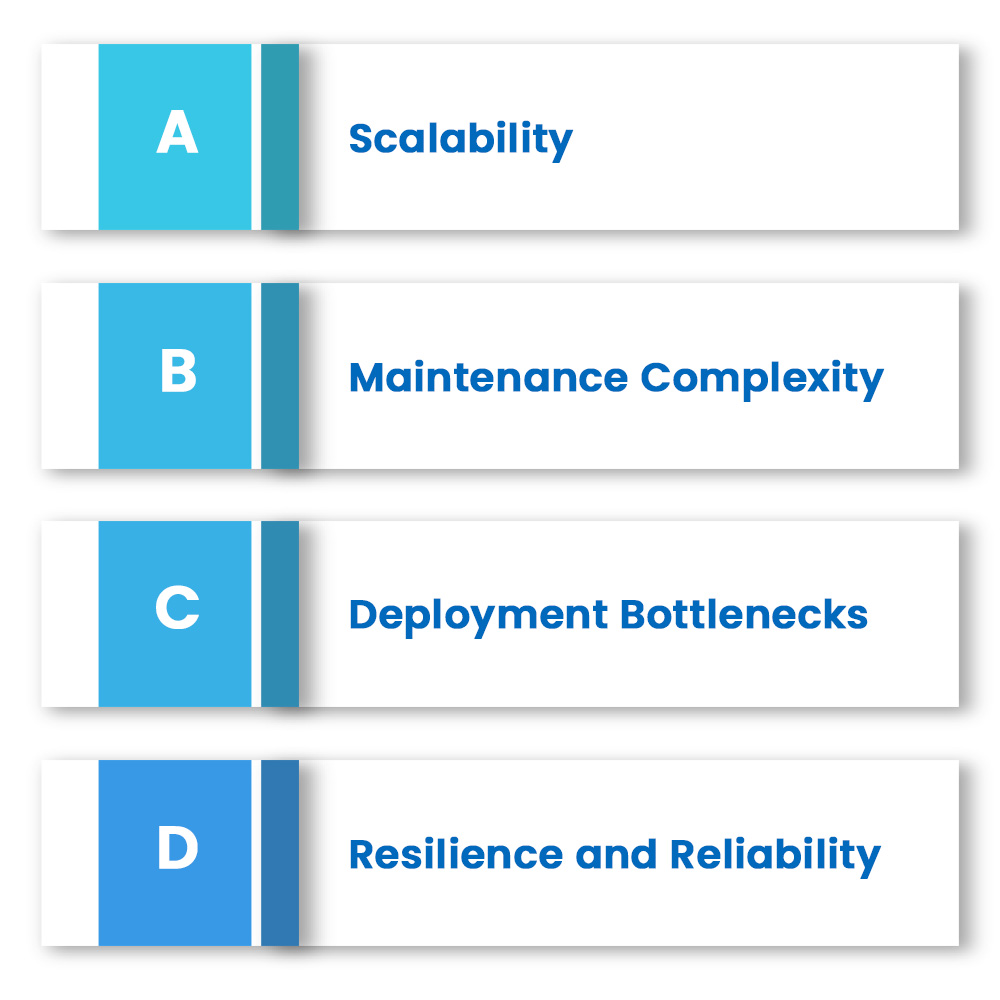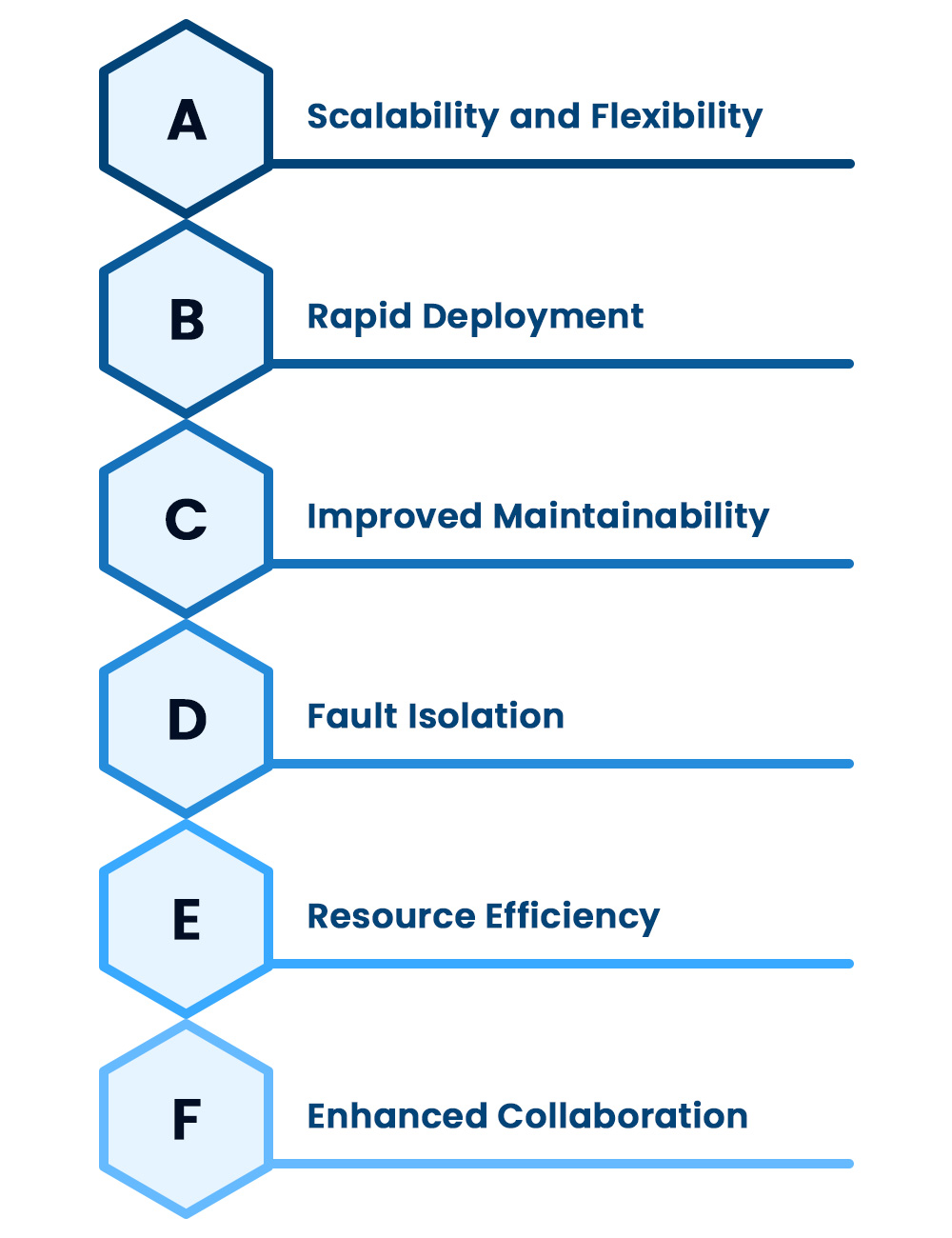Introduction
Understanding the Challenges of Monolithic Applications
- Scalability: Monolithic applications struggle to scale effectively, as increasing demand for one functionality may require scaling the entire application, leading to resource wastage.
- Maintenance Complexity: Large monolithic codebases are challenging to maintain, as changes to one module may inadvertently affect other components, making debugging and updates cumbersome.
- Deployment Bottlenecks: Deploying changes to monolithic applications can be time-consuming, leading to longer release cycles and delayed feature rollouts.
- Resilience and Reliability: A failure in one module of a monolithic application can lead to the entire application becoming unavailable.

Introducing Microservices and Containerization
Microservices architecture addresses the limitations of monolithic applications by breaking them down into small, autonomous services. Each microservice is dedicated to a specific business functionality and operates independently, communicating with other services through well-defined APIs. This decentralized approach enhances scalability, simplifies maintenance, and enables rapid development and deployment of new features.
Containerization complements microservices by providing an isolated runtime environment for each microservice. Containers package the application, its dependencies, and runtime components into a single, lightweight unit that can be deployed consistently across different environments. This ensures consistency and portability, making the deployment and scaling of microservices seamless and efficient.
The Role of Domain-Driven Design (DDD)
Domain-Driven Design is a software development methodology that revolves around understanding the core business domain and aligning the software model accordingly. DDD emphasizes modeling software around real-world business concepts, making it easier for stakeholders to collaborate and understand the application’s design.
When applied to the transformation of monolithic applications into microservices, DDD helps in:
- Identifying Bounded Contexts: DDD encourages the division of large domains into smaller, self-contained bounded contexts. Each bounded context becomes a potential microservice candidate, representing a specific business capability.
- Defining Aggregates: In DDD, aggregates represent groups of related entities that should be treated as a single unit. Decomposing monolithic applications into aggregates simplifies the process of identifying microservice boundaries.
- Enabling Seamless Communication: By aligning the software architecture with business domains, DDD promotes clear communication and collaboration between cross-functional teams, fostering an efficient development process.
The Transformation Process
- Identify the Bounded Contexts: Analyze the monolithic application to identify distinct bounded contexts that can be transformed into individual microservices.
- Decompose the Monolith: Break down the monolithic application into smaller, manageable components based on identified bounded contexts. Each component will serve as a potential microservice.
- Define Service Contracts: Clearly define the APIs and interfaces for each microservice to ensure seamless communication between them.
- Develop Microservices: Rebuild each component as a separate microservice, leveraging modern development practices and technologies.
- Implement Containerization: Package each microservice into a container using tools like Docker, ensuring consistency and portability across different environments.
- Orchestrate with Kubernetes: Deploy and manage the microservices using Kubernetes, a container orchestration platform that simplifies scaling, load balancing, and high availability.
- Monitor and Optimize: Continuously monitor the performance and behavior of microservices to identify bottlenecks and optimize resource utilization.

Benefits of Microservices and Containerization with DDD

- Scalability and Flexibility: Microservices allow organizations to scale individual services independently, accommodating varying levels of demand without affecting the entire application.
- Rapid Deployment: Containerization streamlines the deployment process, reducing the time taken to release new features and updates.
- Improved Maintainability: Microservices promote modularization, making maintenance and debugging more straightforward, while containerization ensures consistent deployment and runtime environments.
- Fault Isolation: The isolation provided by microservices and containers prevents a failure in one component from affecting the entire application.
- Resource Efficiency: Microservices' granular architecture allows organizations to allocate resources optimally, avoiding overprovisioning.
- Enhanced Collaboration: DDD fosters better collaboration between business stakeholders and development teams, resulting in software that better aligns with actual business requirements.
Challenges and Considerations
- Complex Distributed Systems: Microservices introduce complexity in managing distributed systems and inter-service communication.
- Data Management: Handling data consistency and management across multiple microservices requires careful planning.
- Testing and Debugging: Testing and debugging in distributed environments can be more challenging than in a monolithic setting.
- Organizational Changes: The shift to microservices may necessitate changes in team structures and workflows.
Conclusion
The convergence of microservices, containerization, and Domain-Driven Design heralds a new era of agile and scalable software development. By decomposing legacy monolithic applications into microservices and orchestrating them with containerization, organizations can achieve greater flexibility, scalability, and maintainability. Domain-Driven Design empowers developers to align the software architecture with actual business needs, facilitating seamless communication between cross-functional teams.
As businesses strive to stay ahead in the ever-evolving digital landscape, embracing the transformative potential of microservices, containerization, and Domain-Driven Design has become imperative. The adoption of this symbiotic trio paves the way for modern, responsive, and adaptable software ecosystems that can meet the demands of today’s dynamic and competitive markets. Connect with our experts today.





